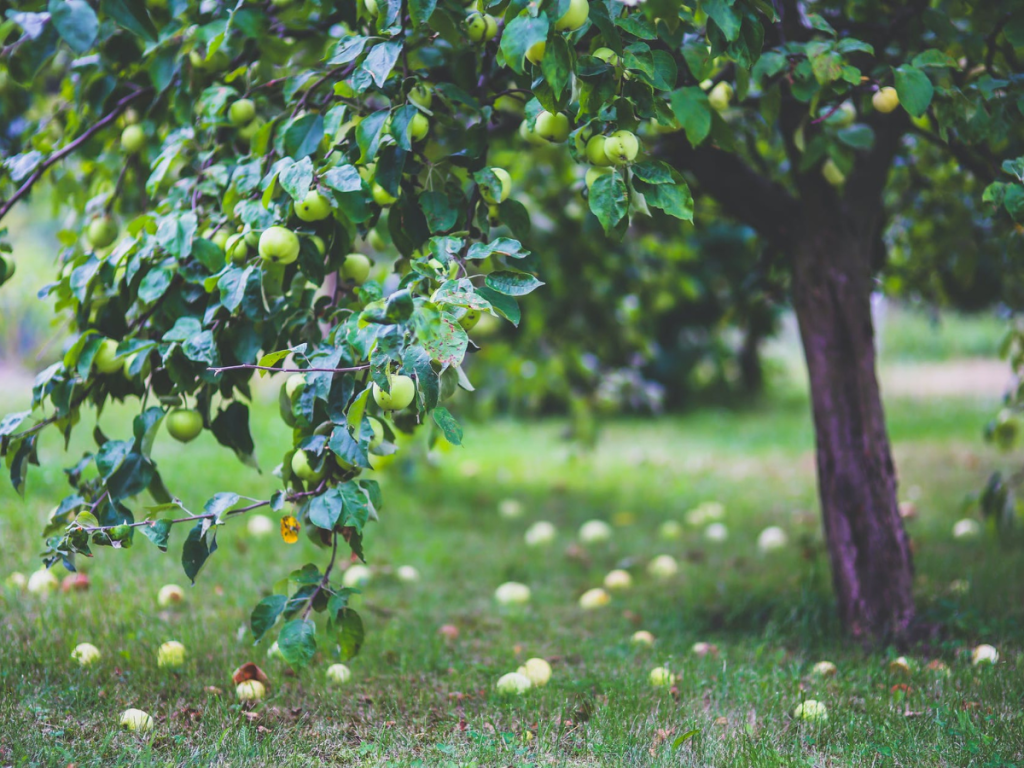Did you know that agroforestry is one of the most effective ways to improve land health and sequester carbon? Agroforestry is a type of sustainable agriculture that involves the planting of trees and shrubs in close proximity to crops and livestock. By incorporating agroforestry into your farming practices, you can help improve the health of your soil, reduce erosion, and sequester carbon dioxide. So what are you waiting for? Start implementing agroforestry on your farm today!
Table of Contents
What is Agroforestry?
Agroforestry is a land management system that involves combining trees and crops in the same area. The trees can provide shade and windbreaks for the crops, as well as improve the quality of the soil. In addition, agroforestry can help to diversify farm incomes and provide other benefits, such as fuelwood and timber. Although it is a relatively new concept in the West, agroforestry has been practiced for centuries in many parts of the world, including Asia, Africa, and Latin America. With rising concerns about climate change and deforestation, agroforestry is increasingly being seen as a potential solution to some of the world’s most pressing problems.
How to Define Agroforestry
So what counts as agroforestry? There are typically four criteria: intentional, intensive, interactive and integrated.
- Intentional: The way a piece of land’s trees, animals and plants interact must be planned and nurtured as a complete cycle or system.
- Intensive: The forestry work must be carried out with a level of high intensity that is optimised for productivity.
- Interactive: The system must be productive while also benefiting the environment, including local ecosystems and biodiversity.
- Integrated: The land’s trees, crops and animals must integrate to form a whole, so that its production levels and ecology reach their potential.

Different Types of Agroforestry
Agroforestry is the deliberate cultivation of trees and shrubs in combination with traditional crops or livestock. It is an age-old practice that has been used around the world to increase yield, improve soil health, and provide a host of other environmental benefits. Today, there are many different types of agroforestry systems in use, each with its own unique advantages.
- Alley farming
Alley farming is a type of agriculture that involves growing crops in long, narrow strips of land. This arrangement is often used in areas where land is scarce or expensive, such as cities. Alley farming can also be used to maximize the use of sunlight and space, as well as to reduce the amount of time and labor needed to tend the crops. In addition, alley farming can help to protect delicate ecosystems, such as rainforests. By growing crops in an alley configuration, farmers can leave larger areas of land untouched, which helps to preserve the natural habitat and prevents soil erosion. Alley farming is an efficient and sustainable way to produce food in densely populated areas. It is also a good option for those who want to start their own farm but do not have a lot of space or resources. Alley farming can be a very rewarding experience, and it can provide fresh, healthy food for your community.
- Silvopasture
Silvopasture is a type of land management that combines trees and grazing animals in a single system. Silvopasture can provide a number of benefits, including improved soil health, increased forage production, and enhanced wildlife habitat. In addition, Silvopasture can help to diversify farm operations and provide additional income streams. Silvopasture systems can be designed to meet the specific needs of the landowner and the local climate. With careful planning, Silvopasture can be an effective way to improve the health and productivity of your land.
- Windbreaks
Windbreaks are a type of agroforestry often used in agricultural settings. They are rows of trees or shrubs planted in such a way as to provide protection from the wind. Windbreaks can help to reduce crop damage from high winds, prevent soil erosion, and increase grazing land productivity. In addition, they can provide habitat for wildlife and improve water quality by reducing soil and chemical runoff. While windbreaks require initial investment and ongoing maintenance, they can offer significant benefits to both farmers and the environment.
- Riparian buffer strip
Riparian buffer strips are a type of agroforestry in which trees and shrubs are planted along the banks of streams, rivers, and other bodies of water. The roots of the plants help to stabilize the soil and prevent erosion, while the leaves and branches provide shade and shelter for fish and other aquatic creatures. Riparian buffer strips also help to filter runoff from agricultural fields, reducing the amount of sediment and pollutants that enter the water. In addition, the trees and shrubs can provide valuable habitat for birds, mammals, and other wildlife. Riparian buffer strips offer many benefits to both the environment and the local economy, making them an important tool in sustainable land management.
- Forest farming
Forest farming is a type of agroforestry that involves the cultivation of trees and other plants within a forested setting. Forest farming can take many different forms, but all involve the intentional management of trees and other plants in order to create desired products or outcomes. Forest farmers may manage their crops for timber, fruits, nuts, or other Forest products, or they may use Forest farming as a means of carbon sequestration or biodiversity conservation. Forest farming is an ancient practice that has been used by cultures around the world for millennia, and it continues to be an important part of many peoples’ livelihoods today. Forest farming offers a number of ecological and economic benefits, making it an increasingly popular land-use option in many parts of the world.
- Forest gardening
Forest gardening is a type of agroforestry that involves cultivating a diversity of edible and useful plants in a forest setting. Forest gardens are based on the traditional model of a natural forest, with trees, shrubs, and herbs growing beneath a canopy of taller trees. The plants in a Forest garden are chosen for their complementary relationship with each other, as well as for their usefulness to humans. Common crops include fruits, nuts, berries, vegetables, herbs, and spice trees. Forest gardening can be used to create an efficient and productive food system that closely mimics the structure of a natural forest ecosystem. Forest gardens are also beautiful spaces that provide habitat for wildlife and can help to restore degraded ecosystems.
Why the World Needs Agroforestry
Agroforestry is a term that is used to describe the intentional planting of trees and shrubs in and around agricultural fields. This practice can have a number of benefits, both for the environment and for the farmers who adopt it. One of the most significant benefits of agroforestry is that it can help to mitigate the effects of climate change. Trees and shrubs are known to sequester carbon dioxide, which means that they can help to reduce greenhouse gas emissions.
In addition, agroforestry can help to improve soil health by increasing organic matter levels and improving water retention. This can in turn lead to increased crop yields and more resilient plants. Finally, agroforestry can provide farmers with an additional source of income through the sale of timber or other forest products. For all these reasons, it is clear that agroforestry has a vital role to play in creating a more sustainable future for the world.
The Benefits of Agroforestry
Agroforestry is a land management system that combines trees and crops in a mutually beneficial way. While the benefits of agroforestry vary depending on the specific arrangement of trees and crops, some of the most common benefits include improved soil health, increased food production, and improved water quality.
- Soil health is improved in agroforestry systems due to the increased diversity of plant life. Trees and crops interact with the soil in different ways, which helps to break up compaction and improve drainage. In addition, the roots of trees help to hold the soil in place, preventing erosion. The increased diversity of plant life also helps to promote a healthy population of soil microbes, which are essential for nutrient cycling.
- Water quality is improved in agroforestry systems due to the increased vegetation cover. Trees and crops help to intercept rainfall and slow down the flow of water, giving the ground a chance to absorb the water before it runs off. This helps to reduce flooding and erosion, and it also helps to recharge groundwater supplies. In addition, the roots of trees and other plants help to filter out pollutants from runoff water.
- Agroforestry systems can also provide a more reliable source of food because they combine the benefits of both trees and crops. For example, an agroforestry system that includes both fruit trees and vegetables will provide a longer harvest season than a traditional vegetable garden. In addition, agroforestry systems are often less susceptible to pests and diseases because of the increased diversity of plant life. This can lead to higher yields and less need for chemical inputs.
Overall, agroforestry provides numerous benefits that make it an attractive option for land managers looking to improve soil health, water quality, and food production.
Challenges Facing Agroforestry
For centuries, agroforestry has been employed globally to yield crops, timber, and habitation.Agroforestry, which is the practice of growing trees and other plants alongside crops or pastureland, has been gaining popularity in recent years as a means of fighting climate change and helping small farmers earn a living. However, agroforestry faces several challenges.
- One of the biggest challenges is that it requires a significant amount of land. This can be a problem for small farmers who often have limited land resources.
- Another challenge is that agroforestry can be labor-intensive, making it less profitable for farmers.
- Finally, agroforestry can also be susceptible to pests and diseases, which can damage crops and reduce yields.
Despite these challenges, agroforestry remains an important tool for sustainable agriculture. With continued research and development, it has the potential to help small farmers thrive while also playing a role in mitigating climate change.
Support Sustainable Forestry
A healthy forest is essential to life on earth. Not only do they provide homes for countless plant and animal species, but they also help to regulate the global climate and provide humans with food, water, and wood. Unfortunately, forests are under threat from deforestation, which can have a devastating impact on local ecosystems. One way to help protect forests is to support sustainable forestry.
Sustainable forestry is an environmentally friendly way of harvesting trees that ensures that new trees are planted to replace those that are removed. This approach helps to ensure that forests will be able to continue to provide vital ecosystem services for generations to come. By supporting sustainable forestry, we can help to protect the world’s forests and the countless creatures that call them home.
Conclusion
So what is agroforestry? Simply put, it’s the intentional planting of trees and shrubs together with crops and/or livestock. The benefits are many – from sequestering carbon and reducing erosion to providing food, shelter, and income for farmers. If you’re looking for a way to help the environment that also has tangible benefits for people, agroforestry may be just what you’re looking for. Have you tried agroforestry on your land? Let us know in the comments below!
References:
The Environmental Benefits of Agroforestry
Advantages and Disadvantages of Agroforestry Systems and Practices

